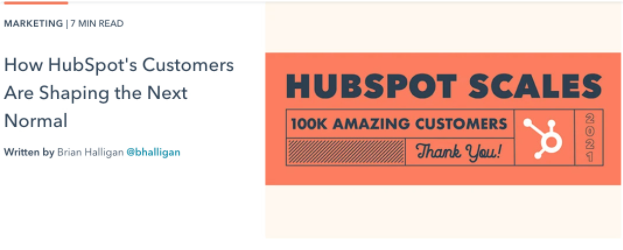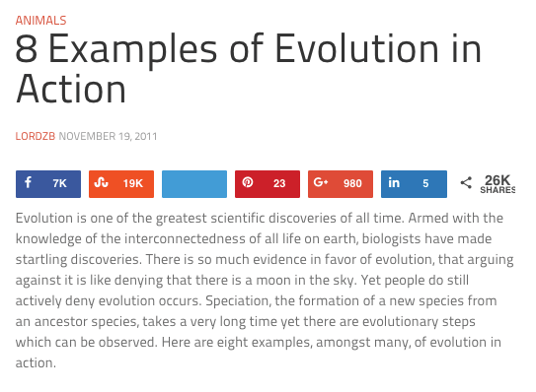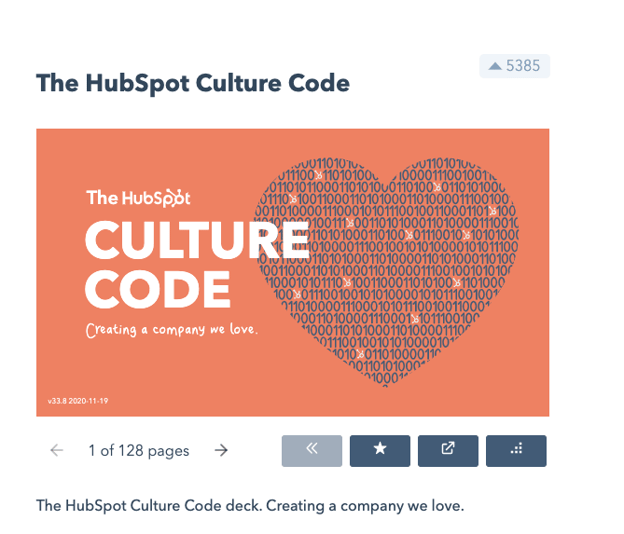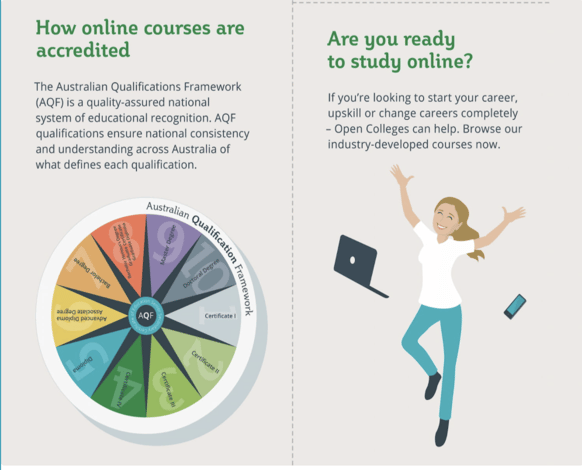Quick Blog Writing Tips
What makes a good blog post?
Before you write a blog, make sure you know the answers to questions like, "Why would someone keep reading this entire blog post?" and "What makes our audience come back for more?"
To start, a good blog post is interesting and educational. Blogs should answer questions and help readers resolve a challenge they're experiencing — and you have to do so in an interesting way.
It's not enough just to answer someone's questions — you also have to provide actionable steps while being engaging. For instance, your introduction should hook the reader and make them want to continue reading your post. Then, use examples to keep your readers interested in what you have to say.
Remember, a good blog post is interesting to read and provides educational content to audience members.
(Want to learn how to apply blogging and other forms of content marketing to your business?
Check out HubSpot Academy's free content marketing course.)
Quick Blog Writing Tips
- Conduct research if necessary to convey your point.
- Make your content skimmable; break it into digestible chunks.
- Include interesting quotes or facts for emphasis on the subject.
- Paint a full picture with images, graphics or video.
- Use Grammarly to catch mistakes.
- If you don’t know where to start, start by telling a story.
- Reference social media posts.
- Each sentence should convey a single idea.
While you have several tools and tips already, we wanted to provide you with some formatting guidelines to use before you publish your own.
Blog Format Guidelines
- Include H2s to arrange ideas.
- Center your Images.
- Add alt text.
- Keep your sentences clear and concise.
- Use media with purpose.
1. Include H2s to arrange ideas.
When you begin typing your blog content, it’s important that you divide paragraphs into sections that make it easier for the reader to find what they need.
If you’re just starting out, then focus on the overarching H2s you want to talk about, and you’ll be able to branch off into subheaders and more naturally as you continue.
2. Center your images.
This is a simple practice that can help your content look more professional with little effort. Centering your images keeps the reader’s attention drawn to the subject — not searching for elsewhere.
Centering also looks better when translating from PC to mobile devices. As formatting transitions to small screens or windows, a centered image will remain the focal point.
3. Add alt text.
So those images you centered earlier, make sure you have descriptive alt text for them, too.
Image alt text allows search engines, like Google, to crawl and rank your blog post better than pages lacking the element. It also leads readers to your blog post if the keywords included are what they searched for in the first place.
Besides SERP features, image alt text is beneficial to readers by providing more accessibility. Image alt text allows people to better visualize images when they can’t see them, and with assistive technology, can be auditorially read aloud for people to enjoy.
4. Keep your sentences short and concise.
When you begin working on the body of your blog post, make sure readers can clearly understand what you’re trying to accomplish.
You shouldn’t feel pressure to elongate your post with unnecessary details, and chances are that if you keep it concise, readers will derive more value from your work.
5. Use media with a purpose.
Break up the monotony of your blog post with some multimedia content where seen fit.
Your reader will enjoy visiting a blog page with images, videos, polls, audio or slideshows as opposed to a page of black and white text.
It also makes it more interactive and improves your on-page search engine optimization (SEO).
Now, do you want some real examples of blog posts? See what your first blog post can look like based on the topic you choose and the audience you're targeting.
Blog Post Examples
- List-Based Post
- Thought Leadership Post
- Curated Collection Post
- SlideShare Presentation
- Newsjacking Post
- Infographic Post
- How-to Post
- Guest Post
1. List-Based Blog Post
List-Based Post Example: 17 Blogging Mistakes to Avoid in 2021, According to HubSpot Bloggers
List-based posts are sometimes called "listicles," a mix of the words "list" and "article." These are articles that deliver information in the form of a list. A listicle uses sub-headers to break down the blog post into individual pieces, helping readers skim and digest your content more easily.
As you can see in the example from our blog, listicles can offer various tips and methods for solving a problem.
2. Thought Leadership Post
Example: How HubSpot's Customers Are Shaping the Next Normal

Thought leadership posts allow you to share your expertise on a particular subject matter and share firsthand knowledge with your readers.
These pieces — which can be written in the first person, like the post shown above — help you build trust with your audience so people take your blog seriously as you continue to write for it.
3. Curated Collection Post
Example: 8 Examples of Evolution in Action

Curated collections are a special type of listicle blog post. Rather than sharing tips or methods for doing something, this type of blog post shares a list of real examples that all have something in common in order to prove a larger point.
In the example post above, Listverse shares eight real examples of evolution in action among eight different animals — starting with the peppered moth.
4. Slide Presentation
Example: The HubSpot Culture Code

HubSpot Slides is a presentation tool that helps publishers package a lot of information into easily shareable slides. Think of it like a PowerPoint, but for the web. With this in mind, SlideShare blog posts help you promote your SlideShare so that it can generate a steady stream of visitors.
Unlike blogs, slide decks don't often rank well on search engines, so they need a platform for getting their message out there to the people who are looking for it. By embedding and summarizing your SlideShare on a blog post, you can share a great deal of information and give it a chance to rank on Google at the same time.
Need some slideshow ideas? In the example above, we turned our company's "Culture Code" into a slides presentation that anyone can look through and take lessons from, and then promoted it in a blog post.
5. Newsjacking Post
Example: Ivy Goes Mobile With New App for Designers

"Newsjacking" is a nickname for "hijacking" your blog to break important news related to your industry. Therefore, the newsjack post is a type of article whose sole purpose is to garner consumers' attention and, while offering them timeless professional advice, prove your blog is a trusted resource for learning about the big things that happen in your industry.
The newsjack example above was published by Houzz, a home decor merchant and interior design resource, about a new mobile app that was launched just for interior designers. Houzz didn't launch the app, but the news of its launching is no less important to Houzz's audience.
6. Infographic Post
Example: The Key Benefits of Studying Online [Infographic]
 The infographic post serves a similar purpose as the SlideShare post — the fourth example, explained above — in that it conveys information for which plain blog copy might not be the best format.
The infographic post serves a similar purpose as the SlideShare post — the fourth example, explained above — in that it conveys information for which plain blog copy might not be the best format.
For example, when you're looking to share a lot of statistical information (without boring or confusing your readers), building this data into a well-designed, even engaging infographic can keep your readers engaged with your content. It also helps readers remember the information long after they leave your website.
7. How-to Post
Example: How to Write a Blog Post: A Step-by-Step Guide
For this example, you need not look any further than the blog post you're reading right now! How-to guides like this one help solve a problem for your readers. They're like a cookbook for your industry, walking your audience through a project step by step to improve their literacy on the subject.
The more posts like this you create, the more equipped your readers will be to work with you and invest in the services you offer.
8. Guest Post
Example: Your Bookmarkable Guide to Social Media Image Sizes in 2021 [Infographic]
 Guest posts are a type of blog post that you can use to include other voices on your blog. For example, if you want to get an outside expert's opinion on a topic, a guest post is perfect for that.
Guest posts are a type of blog post that you can use to include other voices on your blog. For example, if you want to get an outside expert's opinion on a topic, a guest post is perfect for that.
Additionally, these posts give your blog variety in topic and viewpoint. If your customer has a problem you can't solve, a guest post is a great solution.
If you begin accepting guest posts, set up editorial guidelines to ensure they're up to the same standards as your posts.
So we’ve gone through the different types of blog posts you can make, but how do you consistently make quality blog posts that your viewers will enjoy?

Why Blogging is Important for Marketing and SEO
ReplyDeleteBlogging helps boost SEO quality by positioning your website as a relevant answer to your customers' questions
Delete